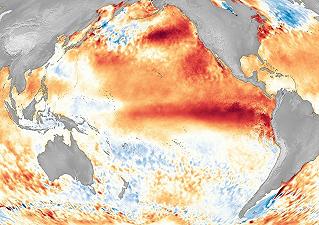A ‘new El Niño’ could trigger climate change across the Southern Hemisphere | Lega Nerd
Many will have had the opportunity to hear about the El Niño-Southern Oscillationan expression which refers to a change in the winds and currents of the tropical waters of the Pacific that is completely unpredictable. And capable of influencing the climate of the entire planet in a rather significant way. Recent research has instead revealed the presence of a “New El Niño” and therefore of a new climatic phenomenon discovered exactly south of the equator.
Its origins would seem to be linked to a small area of the south-western Pacific Ocean, and therefore close to Australia and New Zealand. But despite this it would seem to be able to interest temperature changes across the Southern HemisphereThis was revealed by a study led by the University of Reading and whose results were published in the Journal of Geophysical Research: Oceans.
The results of the study
This study reveals how important the interaction between the atmosphere and the ocean is for the climate. Furthermore, according to the team of researchers engaged in this research, the discovery made could prove to be of great help in the future in understanding climate change. New El Niño It was discovered by simulating the climate over a 300-year period, using sophisticated models that combined data from the atmosphere, sea ice and oceans.
It is precisely this analysis that has allowed us to highlight a variation in the surface temperature of the seas in the southern hemisphere called exactly “Southern Hemisphere Circumpolar Wavenumber-4 Pattern’. What is created is nothing other than a real chain reaction that repeats itself every year in the southern hemisphere with four alternating warm and cold regions in the seas. And it all starts right near Australia and New Zealand.
What happens is that when the ocean temperature changes in this small area, it creates a ripple effect throughout the atmosphere, which hits the Southern Hemisphere with strong westerly winds.


